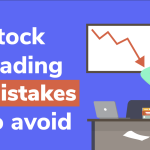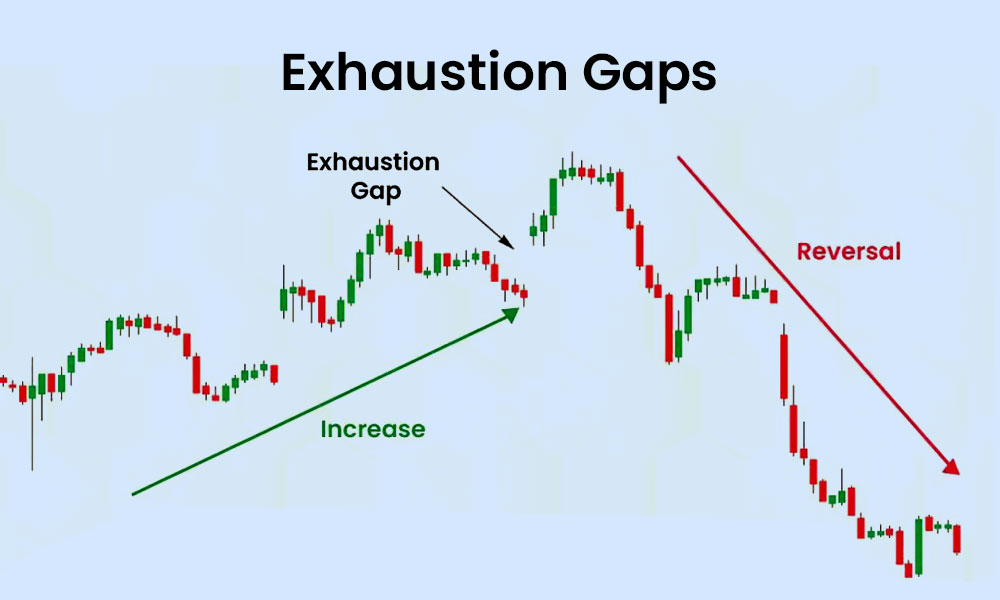
By ATGL
Updated June 28, 2025
Stock trading represents one of the most dynamic aspects of modern investing, offering opportunities for financial growth alongside significant challenges that require careful navigation. Traders can capitalize on price movements across various timeframes, from minutes to years, making it essential to understand proven strategies and optimization techniques.
This comprehensive guide explores fundamental stock trading concepts, covering essential strategies from rapid-fire day trading to methodical long-term approaches. We examine technical analysis tools, risk management strategies, trading psychology, and methods for adapting to different market conditions. Whether you’re beginning your trading journey or seeking to refine existing strategies, these insights provide the foundation for more informed trading decisions.
The Basics Of Stock Trading And Investing In Stocks
Stock trading involves the buying and selling of company shares with the primary goal of generating profits from price movements. Unlike traditional investing in stocks, which focuses on long-term wealth building through company ownership and dividend income, trading emphasizes shorter-term price fluctuations and market timing.
The stock market operates as a network of exchanges where buyers and sellers interact to determine security prices. Market makers facilitate transactions by providing liquidity, while institutional investors, retail traders, and algorithmic systems contribute to price discovery. Understanding this structure helps you recognize how your actions fit within the broader ecosystem.
Stock trading differs from investing in key aspects. Traders typically hold positions for shorter periods, ranging from minutes to months, while investors maintain holdings for years or decades. Trading requires active monitoring of market conditions and technical indicators, whereas investing focuses on fundamental analysis of company performance and long-term growth prospects.
The appeal of stock market trading lies in its potential for generating returns regardless of market direction. You can profit during bull markets by buying securities as prices rise, or during bear markets through short selling and other strategies that benefit from declining prices. However, trading involves higher risks compared to traditional investing, including increased transaction costs and the potential for rapid losses due to market volatility.
3 Popular Stock Trading Strategies To Know
Modern stock market trading encompasses various approaches, each with distinct characteristics, risk profiles, and potential rewards. The three primary types of trading include day trading, swing trading, and position trading. Each strategy requires different skills, time commitments, and market analysis techniques:
- Day trading represents the most intensive form of active trading, requiring constant market monitoring and rapid decision-making.
- Swing trading offers a middle ground between active trading and long-term investing, focusing on medium-term price movements.
- Position trading, also known as long-term investing, emphasizes fundamental analysis and patient capital appreciation over extended periods.
Understanding these different approaches allows you to select strategies that align with your available time, risk tolerance, and financial objectives. Many successful traders combine elements from multiple strategies to create personalized approaches that suit their specific circumstances.
How Day Trading Works In Stock Market Trading
Day trading involves opening and closing positions within the same trading session, capitalizing on short-term price movements while avoiding overnight exposure to after-hours news events and gap openings.
This approach requires a significant time commitment and market expertise, as you must monitor multiple positions simultaneously while analyzing real-time price action. Day traders rely heavily on technical analysis, using tools such as level II quotes, time and sales data, and short-term chart patterns to identify entry and exit points.
The strategy appeals to traders seeking immediate feedback and potential daily income generation. However, day trading involves substantial risks, including rapid losses due to market volatility and psychological pressure from making numerous quick decisions. Successful day trading requires substantial capital to meet the pattern day trader rule requiring minimum balances of $25,000, while the fast-paced nature can quickly deplete trading capital through consecutive small losses.
Swing Trading Techniques For Better Timing
Swing trading focuses on capturing price movements that occur over several days to weeks, positioning traders to profit from intermediate-term trends and market corrections. This approach allows participation in significant price moves while avoiding the intense time requirements of day trading.
Swing traders analyze both technical and fundamental factors to identify securities likely to experience substantial price movements, often using weekly and daily charts to identify trend reversals, breakout patterns, and momentum shifts that signal potential trading opportunities.
The strategy offers several advantages, including reduced transaction costs due to fewer trades and lower time requirements for market monitoring. Swing traders can maintain regular employment while actively trading, making this approach accessible to a broader range of participants. Risk management involves setting appropriate stop-loss levels and position sizes to protect against adverse price movements, while accounting for overnight and weekend risks that could affect holdings.
Strategies for Successful Long-Term Investing
Long-term investing represents the most conservative approach to stock market participation, focusing on companies with strong fundamentals and sustainable competitive advantages. This strategy emphasizes patient capital appreciation through compound growth over periods measured in years or decades.
Long-term investors conduct thorough fundamental analysis to identify undervalued companies with strong growth prospects, examining financial statements, management quality, competitive positioning, and industry trends to follow informed investment strategies that can withstand short-term market volatility.
The approach offers several benefits, including lower transaction costs, reduced tax implications through long-term capital gains treatment, and the ability to benefit from compound growth over extended periods. Successful long-term investing requires patience and discipline to maintain positions through market cycles, resisting the temptation to trade frequently based on short-term market movements while focusing on the underlying business performance of chosen companies.
Using Technical Analysis To Improve Stock Buying Decisions
Technical analysis provides you with systematic methods for evaluating securities based on price action, volume patterns, and market sentiment indicators. This analytical approach assumes that all relevant information is reflected in a security’s price and that historical patterns tend to repeat, offering predictive value for future price movements.
Stock charts serve as the primary tools for technical analysis, displaying price and volume data in various formats, including candlestick, bar, and line charts. These visual representations help you identify trends, support and resistance levels, and pattern formations that signal potential trading opportunities.
Moving averages represent one of the most fundamental technical indicators, smoothing price data to reveal underlying trends and momentum shifts. Simple moving averages calculate the average price over a specific period, while exponential moving averages place greater weight on recent prices to provide more responsive signals.
The Relative Strength Index (RSI) measures the speed and magnitude of price changes to identify overbought and oversold conditions. RSI values above 70 typically indicate overbought conditions that may precede price declines, while values below 30 suggest oversold conditions that could lead to price rebounds.
The Moving Average Convergence Divergence (MACD) indicator combines multiple moving averages to generate buy and sell signals based on momentum changes. The MACD line represents the difference between fast and slow moving averages, while the signal line provides additional confirmation for trading decisions.
Successful technical analysis requires combining multiple indicators to confirm trading signals and reduce false positives. Traders often use price patterns, volume analysis, and momentum indicators together to build comprehensive analytical frameworks that improve decision-making accuracy.
Mastering Risk Management In Stock Trading
Risk management represents the cornerstone of successful stock trading, protecting capital from significant losses while preserving the ability to participate in profitable opportunities. Effective risk management involves multiple strategies working together to control downside exposure while allowing for upside potential.
Position sizing determines the amount of capital allocated to individual trades based on account size and risk tolerance. Professional traders typically risk no more than 1% to 2% of their account value on any single trade, allowing them to withstand multiple consecutive losses without severely damaging their trading capital.
Stop-loss orders provide automatic protection against adverse price movements by closing positions when predetermined loss levels are reached. These orders help traders maintain discipline by removing emotional decision-making from the loss-cutting process. However, they are not foolproof and can be subject to slippage during volatile market conditions.
Diversification reduces portfolio risk by spreading investments across multiple securities, sectors, or asset classes. While individual positions may experience significant losses, diversified portfolios are less likely to suffer catastrophic declines that could eliminate trading capital.
Risk-reward ratios help you evaluate potential trades by comparing expected profits to potential losses. Professional traders typically seek opportunities with risk-reward ratios of at least 1:2, meaning they expect to make twice as much on winning trades as they lose on losing trades.
Mental stop-losses complement physical stop-loss orders by establishing rules for exiting trades based on changing market conditions or strategy invalidation. These predetermined exit criteria help traders maintain objectivity when positions move against them.
How To Adapt Your Stock Trading Strategy to Market Conditions
Market conditions change constantly, requiring you to adjust your strategies to remain effective across different environments. Bull markets, characterized by rising prices and positive sentiment, typically favor momentum-based strategies that capitalize on upward price trends.
During bull markets, traders often focus on buying dips in strong uptrends and holding positions longer to capture extended price moves. Growth stocks and momentum strategies tend to outperform during these periods, as investor optimism drives prices higher across broad market segments.
Bear markets present different challenges and opportunities, with declining prices and negative sentiment creating environments where traditional long strategies struggle. You may need to adjust position sizes, shorten holding periods, or employ defensive strategies that profit from declining prices.
Stock market seasonality patterns provide additional context for strategy adaptation, as certain times of year historically favor specific trading approaches. Understanding these patterns helps you align your strategies with probable market behaviors during different calendar periods.
Volatile markets require enhanced risk management and potentially smaller position sizes to account for increased price uncertainty. You may need to widen stop-loss levels or reduce leverage to avoid being stopped out of positions by normal market fluctuations.
Sideways or range-bound markets favor different strategies than trending markets, with range trading and mean reversion approaches often proving more effective than momentum strategies. You must recognize these conditions quickly to avoid applying inappropriate strategies that could result in losses.
Common Mistakes To Avoid In Stock Market Trading
Emotional decision-making represents one of the most destructive forces in stock trading, leading to impulsive actions that contradict established trading plans. Fear and greed often override rational analysis, causing you to exit winning positions too early or hold losing positions too long.
Overtrading occurs when you execute too many transactions relative to your account size or available opportunities. This behavior typically results from impatience or the desire to recover losses quickly, leading to increased transaction costs and reduced overall performance.
Inadequate risk management destroys more trading accounts than any other factor, as traders who fail to control losses eventually face catastrophic drawdowns that eliminate their capital. Position sizing errors and the absence of stop-loss orders contribute significantly to this problem.
Lack of consistency in your trading plan prevents you from developing coherent strategies and measuring their effectiveness over time. Traders who constantly change approaches never develop expertise in any particular method, leading to mediocre results across all strategies.
Ignoring transaction costs can significantly impact trading profitability, particularly for active traders who execute numerous small trades. Commissions, fees, and bid-ask spreads accumulate quickly and can eliminate the profits from otherwise successful trading strategies.
Unrealistic expectations about trading returns often lead to disappointment and poor decision-making. If you expect consistently large profits, you may take excessive risks or abandon sound strategies after short periods of underperformance.
Insufficient market knowledge leaves you unprepared for changing conditions and unable to adapt your strategies effectively. Successful trading requires continuous learning about market mechanics, economic factors, and evolving trading technologies.
Take Control Of Your Trading Journey
Developing expertise in stock trading requires dedication, continuous learning, and access to quality educational resources that can accelerate your progress. Professional guidance and structured learning programs offer significant advantages for traders seeking to improve their performance systematically, helping them avoid common pitfalls while developing more sophisticated analytical skills.
The financial markets continue evolving with new technologies, regulations, and trading methodologies that require traders to adapt their approaches continuously. Above the Green Line’s membership programs provide comprehensive training, proven strategies, and ongoing support to help you develop the skills needed for consistent trading success.
<h4>Related Articles</h4>






